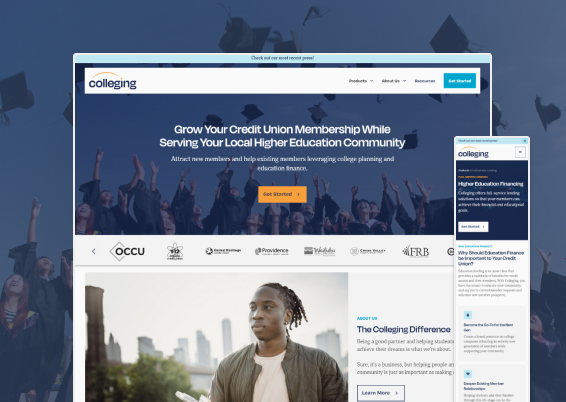How Website Design Can Help Improve User Experience and Engagement
How Website Design Can Help Improve User Experience and Engagement
Blog Article
The Ultimate Guide to Modern Internet Site Style Trends
In the ever-evolving digital landscape, modern-day website style fads play an important function in forming customer experience and interaction. From the increase of minimal style principles that focus on simplicity to the impact of strong typography in defining brand identification, each component contributes to a natural on-line presence.
Minimalist Design Concepts
Minimal design principles emphasize the concept that much less is more, advocating for simplicity and functionality in aesthetic communication. This approach strips away unneeded components, focusing instead on important components that share the desired message successfully. By prioritizing quality, minimal design enhances user experience, enabling site visitors to navigate web sites effortlessly.
Core tenets of minimalist layout include using ample white area, which produces a sense of balance and organization. This negative space not only guides the visitor's attention to crucial elements but additionally cultivates a soothing aesthetic environment. Additionally, a limited shade combination is frequently employed, utilizing single systems or soft hues to keep aesthetic cohesion and protect against overwhelming the individual.
Typography plays a critical role in minimalist style, where readable font styles are chosen for their simpleness and effectiveness in connecting content. Inevitably, minimal layout principles grow a focused atmosphere that motivates customers to involve with the material, improving the total performance of contemporary website style.
Vibrant Typography Choices
Welcoming vibrant typography choices has become a defining quality of contemporary site style, as it effectively records attention and conveys solid messaging. Designers are increasingly making use of typography not simply as a practical element yet as a vital visual element that improves the general visual and user experience.

Additionally, the association of bold typography with minimal design concepts enables striking contrasts, boosting readability while maintaining visual appeal. Making use of whitespace around strong text better emphasizes its relevance, making sure that the message reverberates with the target market.
As digital landscapes come to be more competitive, leveraging vibrant typography allows brands to distinguish themselves and leave a long-term impact. The cautious option of fonts and their application can evoke emotions, develop tone, and drive activity, making strong typography a crucial tool in modern-day website layout. Eventually, it is an effective means to enhance narration and guarantee that vital messages are not only seen but also really felt.
Mobile-first and receptive Layout
Mobile-first and receptive design has actually arised as a critical concept in modern-day internet site development, mirroring the enhancing reliance on mobile phones for accessing on the internet content. As individual habits changes towards mobile browsing, designers have to prioritize producing experiences that adapt flawlessly across different display dimensions and resolutions.
A receptive design guarantees that a website immediately readjusts its format, photos, and capability based upon the gadget being utilized. This method improves customer experience by offering constant navigation and readability, regardless of whether the site visitor gets on a smartphone, desktop, or tablet computer. Moreover, mobile-first design supporters for creating websites originally for smaller sized displays, consequently scaling as much as larger displays. This method urges a much more effective and structured layout process, concentrating on important material and performance first.
Implementing mobile-first and receptive concepts not only satisfies user preferences but likewise straightens with search engine optimization (SEO) methods. Significant internet search engine, hop over to here like Google, focus on mobile-friendly sites in their positions, making it crucial for organizations to adopt these design approaches. In an affordable electronic landscape, welcoming responsive and mobile-first design is not simply an option; it is essential for making sure availability and interaction with a varied target market.
Engaging Microinteractions
Microinteractions play a crucial role in improving individual involvement and general website experience, particularly in the context of receptive and mobile-first design. These subtle layout aspects offer immediate feedback to individuals, making interactions more delightful and intuitive. Instances include button computer animations, alert signals, and packing signs, which not only overview individuals however additionally create a feeling of link with the interface.
Incorporating engaging microinteractions can dramatically boost usability by lowering cognitive load. When individuals obtain acoustic or visual feedback upon carrying out actions, such as clicking a button or submitting a form, they really feel much more confident in their selections. This fosters a smoother navigating experience, inevitably boosting customer retention.

As site design trends continue to advance, the value of microinteractions can not be overemphasized. They function as the refined yet powerful touchpoints that transform normal communications into amazing experiences, thereby boosting the overall efficiency of contemporary website design.
Sustainable Internet Style Practices
Sustainable internet style methods are coming to be significantly essential as the electronic landscape grows and ecological issues increase. Programmers and developers are recognizing their duty to develop websites that not only offer customer demands however also lessen environmental influence. This method incorporates numerous key approaches.
First of all, maximizing energy usage is extremely important. Websites ought to be developed to load rapidly and efficiently, which minimizes web server power use and boosts user experience. Methods such as photo compression, decreasing HTTP demands, and using contemporary coding practices add substantially to this objective.
Secondly, selecting eco-friendly hosting look what i found companies is critical - website design. Numerous holding firms are currently powered by renewable energy sources, allowing web sites to operate in an extra lasting check that way. This option reflects a commitment to decreasing carbon footprints
Additionally, embracing a minimalist layout can enhance sustainability. Fewer aspects on a page result in less data transfer, which not only quickens loading times however likewise preserves resources.
Lastly, promoting digital ease of access ensures that internet sites get to a bigger target market without unnecessary bloat, straightening individual experience with environmental duty. By integrating these lasting techniques, web designers can contribute favorably to both individual involvement and the earth's well-being.
Verdict
In recap, contemporary site layout patterns emphasize the integration of minimal concepts, strong typography, and responsive layout to enhance customer experience. Involving microinteractions add to memorable communications, while lasting methods promote for environmentally aware growth. Jointly, these components not just raise visual appeal but also boost functionality, making sure that sites are both easy to use and aesthetically striking. Adopting these patterns is important for developing impactful digital experiences that resonate with individuals in a significantly affordable on the internet landscape.
In the ever-evolving digital landscape, modern internet site style fads play a vital duty in forming individual experience and involvement. By prioritizing clarity, minimalist style boosts individual experience, allowing visitors to navigate web sites easily.
Inevitably, minimalist design principles cultivate a concentrated atmosphere that urges individuals to involve with the web content, improving the general effectiveness of modern-day website layout.Microinteractions play a critical role in boosting individual interaction and total web site experience, specifically in the context of receptive and mobile-first design.In recap, contemporary site style patterns highlight the integration of minimal concepts, bold typography, and receptive design to enhance user experience.
Report this page